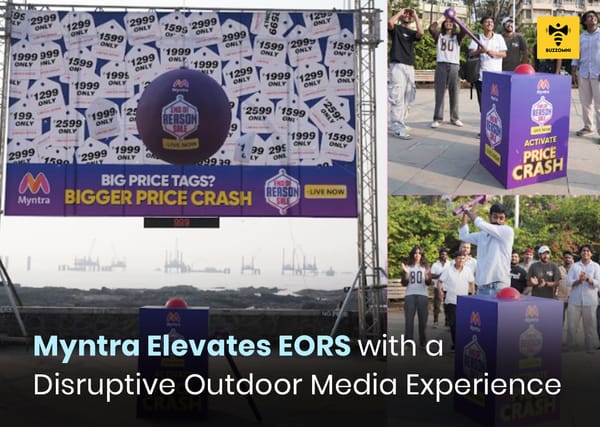How Geo-Targeting and Heat Maps Are Helping Brands Pick the Best OOH Spots
Geo-targeting and heat maps are transforming OOH advertising by replacing guesswork with data. Brands can now identify high-impact locations, maximize ROI, and connect with the right audiences at the right time.

Table of Contents
- Introduction
- The Power of Geo-Targeting in OOH
- Heat Maps: Seeing Audience Behavior in Color
- Why Data-Driven OOH Is the Future
- Real-World Applications
- The Future of Location Intelligence in OOH
- Final Thoughts
Introduction
In the world of Out-of-Home (OOH) advertising, location has always been the golden rule. A brilliantly designed creative might turn heads, but if it isn’t placed where the right people can see it, its impact quickly diminishes. For decades, advertisers leaned on methods like footfall estimates, traffic counts, or even intuition to pick billboard spots and transit placements. These approaches often involved a significant amount of guesswork, with no guarantee of reaching the intended audience.
Today, that’s changing. Geo-targeting and heat map analytics are reshaping the OOH industry by providing brands with the ability to make smarter, data-driven decisions. Platforms like BuzzOmni are leading this shift, giving advertisers powerful tools to move beyond guesswork and make precision-driven choices.
The Power of Geo-Targeting in OOH
Geo-targeting allows advertisers to hone in on specific areas where their target audience is most active. Using anonymized mobile device data, GPS signals, and insights from urban mobility patterns, brands can go beyond surface-level traffic numbers to understand audience demographics and behaviors.
For example, a fitness brand launching a new product doesn’t need to spread its campaign across dozens of random billboards. Geo-targeting can identify clusters of potential customers in office-heavy districts, near gyms, or along commuting routes that align with the lifestyle of health-conscious individuals. By narrowing placements to these zones, brands ensure their ads resonate more strongly and deliver higher returns.
This approach also helps in reaching niche audiences. A luxury retailer, for instance, can focus exclusively on affluent neighborhoods or high-end shopping districts, while a QSR chain might target college campuses and nightlife hubs. Instead of wasting impressions on a broad, unfocused audience, advertisers can connect directly with the people most likely to act.
Heat Maps: Seeing Audience Behavior in Color
While geo-targeting shows where your audience is, heat maps reveal how they move. These visual tools transform complex data into easy-to-understand graphics, using color gradients to highlight high-traffic “hot zones” and low-engagement “cool zones.”
Imagine a sprawling shopping mall with thousands of visitors each day. On the surface, every entrance or hallway may seem equally valuable. But a heat map could reveal that certain entrances, escalators, or food court zones attract significantly higher traffic. With this insight, brands can secure the best placements for billboards, digital screens, or kiosks—ensuring their messages are seen by the maximum number of people.
The same logic applies to transit hubs, airports, or city streets. A heat map can instantly reveal the busiest subway exits, the most crowded intersections, or the pedestrian pathways that consistently attract the most attention. By combining visual clarity with hard data, advertisers avoid costly misplacements and maximize visibility.
Why Data-Driven OOH Is the Future
The shift from intuition to insights is happening quickly, and for good reason. Data-driven OOH offers clear, measurable advantages:
- Higher Accuracy – Real-time mobility data ensures advertisers aren’t relying on outdated traffic reports.
- Better ROI – Resources are allocated efficiently to high-traffic, high-engagement locations.
- Audience Matching – Ads reach the right people at the right time, not just anyone walking by.
- Campaign Optimization – With digital OOH formats, advertisers can adjust campaigns on the fly based on performance.
This precision transforms OOH from a blunt instrument into a targeted marketing tool, rivaling the sophistication of digital advertising.
Real-World Applications
Different industries are already leveraging geo-targeting and heat maps in creative ways:
- Retail – Placing ads in areas with high shopping intent, such as busy markets and malls.
- Food & Beverage – Targeting districts with high student populations, nightlife activity, or tech parks.
- Automotive – Focusing campaigns along highways, dealerships, and affluent residential corridors.
- Technology & Apps – Capturing attention along commuter routes with heavy daily exposure.
By tailoring placements to their audience, brands not only boost awareness but also drive action at the moments that matter most.
The Future of Location Intelligence in OOH
As AI and predictive analytics evolve, location intelligence will only grow sharper. Soon, advertisers won’t just know where people are right now—they’ll know where they’re likely to go next. This creates the potential for hyper-local, real-time campaigns that adapt dynamically to audience movement.
Imagine a digital billboard outside a train station that changes messaging based on the crowd profile at different times of day: coffee ads in the morning, ride-hailing promotions in the evening. This level of flexibility is no longer science fiction—it’s on the horizon.
Final Thoughts
In today’s competitive landscape, the best OOH spots are no longer chosen on a hunch. Data picks them. Geo-targeting and heat maps are transforming outdoor advertising into a precision-driven channel, helping brands reach the right people in the right place at the right time.
With platforms like BuzzOmni, advertisers can take this even further—leveraging real-time audience insights, heat map analytics, and AI-driven targeting to ensure every campaign delivers measurable impact. For brands, embracing these tools means more than just visibility. It means building meaningful, timely connections with audiences—and ensuring that every placement truly earns its space in the real world.



